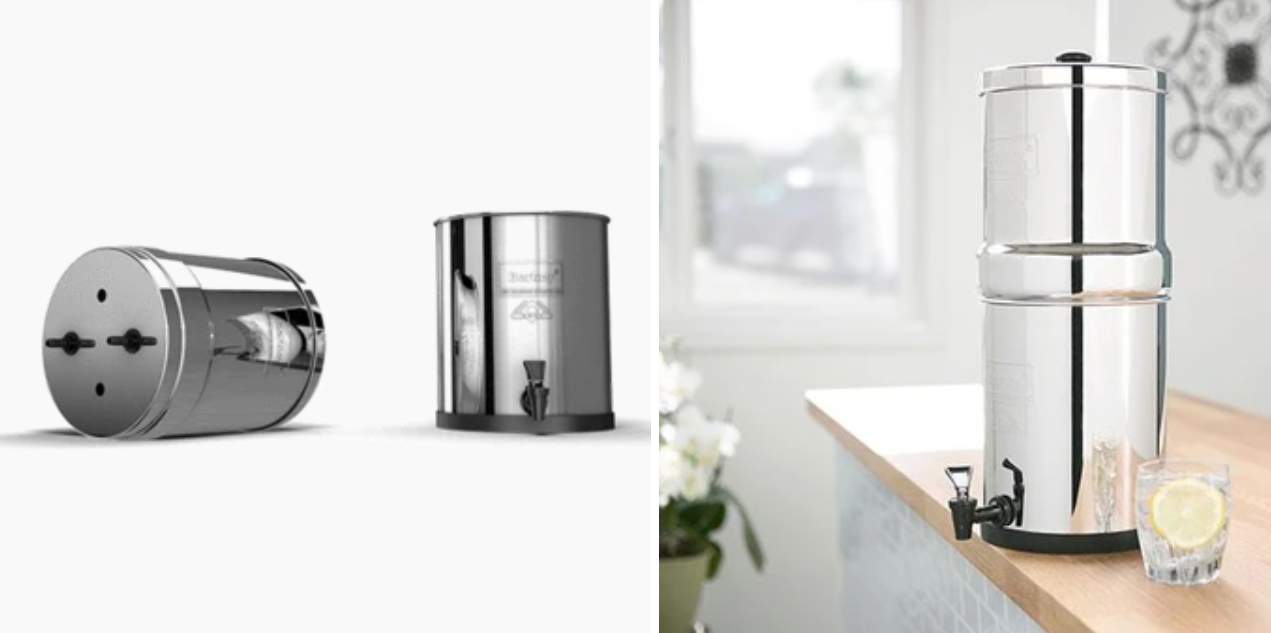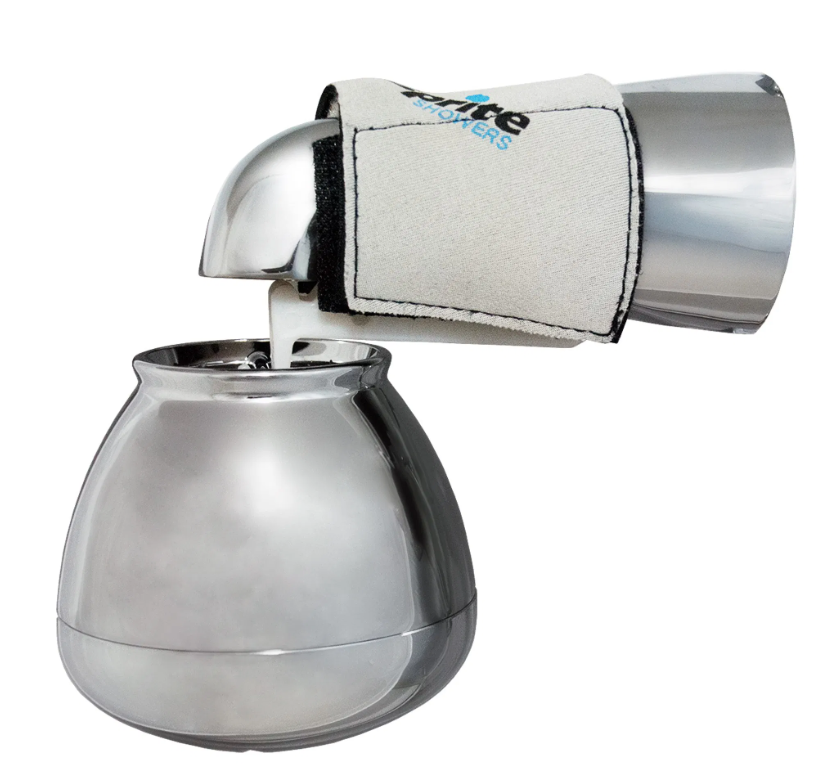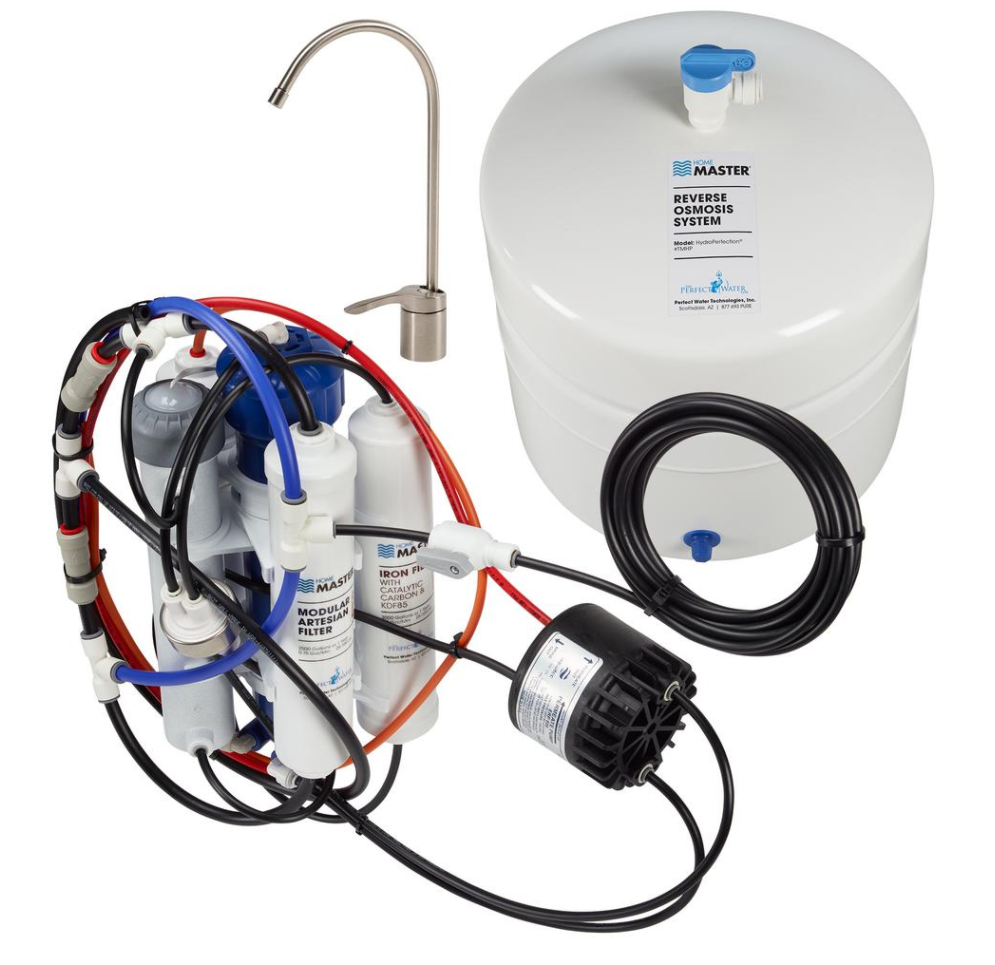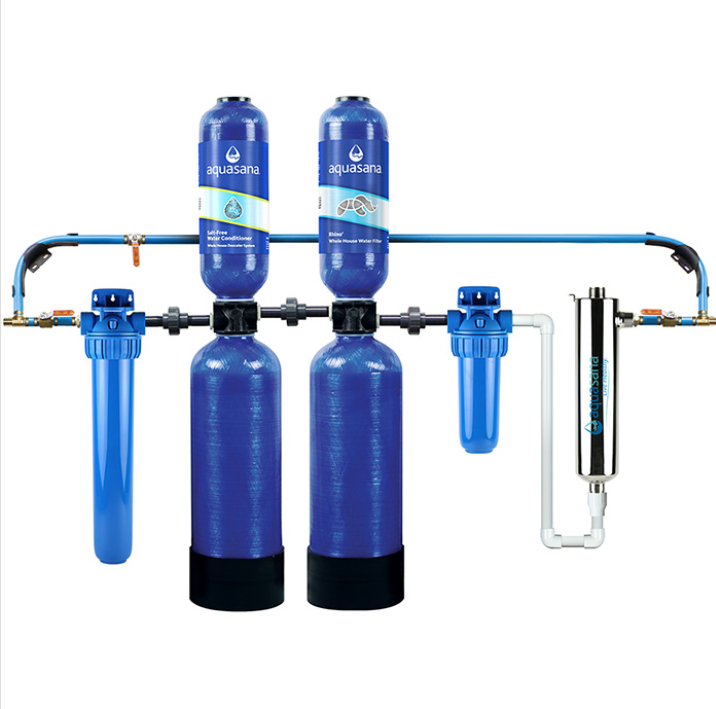1. Toxins in your Tap Water
Basically anything that goes down the drain can enter our water systems.
WHY is it important to reduce toxins from our water supply?
The greater the toxic load, the harder the liver and immune system has to work.
Overtime the liver gets bogged down with so much and becomes less effective at filtering out the daily toxins which puts more and more stress and burden on the immune system.
Many harmful toxins are fat soluble in which the liver, through detoxification, must convert these fat soluble toxins to water soluble compounds so that they can be excreted and eliminated from the body through sweat, urine, stool, and/or breath. Unfortunately, many of these toxins do not get properly converted and removed which means they get stored up in our fat (adipose) tissues. These toxins accumulate over time in our bodies which makes us feel sick and unwell as we age.
Read more on Liver Detox here: Edition 28 Spring Clean the Body
What may be coming out of your tap?
This is not a complete list, but possible toxins found in tap water may include;
Disinfectants: Chlorine, Bromine
Viruses
Parasites
Pathogenic Bacteria
Fecal Matter
Pharmaceutical Drugs
Trihalomethanes: chloroform, dibromochloromethane, bromodichloromethane, bromoform
Inorganic minerals: Chloramine, Chloride, Chlorine Residual, Free Chlorine
Fluoride
Heavy Metals: Barium, Lead, Arsenic, Chromium, Aluminum, Mercury
Pesticides, Glyphosate, Atrazine
VOC’s
Petroleum Products
Nitrites
Microplastics
PCB’s
Stay informed and learn more with the: Pesticide Action Network North America
2. Impacts of Tap Water on GUT Health, Brain Health, Hormones, Respiratory Health and more…
The Symptoms of long-term exposure, consumption, and inhalation of the chemicals found in tap water vary;
Low Thyroid
Brittle Bones
Weakened Digestion
Hormone Dysfunction
GERD, Acid Reflux
Eczema, Psoriasis
Fertility Issues
Calcification of Pineal Gland
Lowering of IQ in Children
ADD, ADHD
Autism
Mental Health Disorders
Arthritis
Toxins impact our biology on a lot of levels. Chlorine and other disinfectants are used to treat our water systems so that every day millions of people have access to potable water in the absence of waterborne illness such as cholera, typhoid fever, and dysentery.
However, as more disinfectant agents are added by municipalities to drinking, bathing, and recreational water to disinfect and kill bacteria, this same effect wipes out the good bacteria and probiotics in the human gut microbiome. Long term consumption and exposure to chlorinated water can contribute to certain imbalances such as leaky gut, immune weaknesses, and other dis-eases within the body as mentioned above.
Additionally, when the disinfectant agent, chlorine, is combined with methane, a natural occurring compound found in water, this creates carcinogenic by-products called Trihalomethanes, a group of four chemicals; chloroform, bromodichloromethane, dibromochloromethane, and bromoform.
When we take a hot shower, the chlorinated/brominated + other possible disinfectant by-products in the water change from a liquid to a gas state (the hot steamy vapours). Inhaling in this hot steamy shower air into the lungs where then it gets passed directly to the blood stream. Consequently the long-term exposure of chlorine ingestion and inhalation impacts our;
Brain Health
Liver Function (reducing liver detox abilities and glutathione levels)
Respiratory Health
Energy (mitochondria)
Gastrointestinal Health
Hormone Function
Certain government websites advise us to open the window, lower the shower temperature, or make sure the space is well ventilated, but this isn't really dealing with the harmful chemicals.
Boiling or distilling water results in the evaporation of certain chemical compounds, but not their actual removal. Boiling water doesn't purify or remove chemical toxins from your water and with distillation, unless there is an extra filtration step, there is a risk that the evaporated chemical compounds reinfect the water.
It is never a good idea to drink tap water in my opinion. In 1992 the American Journal of Public Health published a report that showed a 15% to 35% increase in certain types of cancer for people who consume chlorinated water. This report also stated that much of these effects were due to showering in chlorinated water. The National Cancer Institute and the US Council of Environmental Quality estimates cancer risks for people who consume chlorinated water to be 93% higher than for people who do not. There are some significant risks related to consuming chlorine and chlorinated by-products.
Halogen Compounds Impact Hormone Health
Chlorine, Fluoride and Bromine interfere with absorption of key nutrients like iodine because these halogen compounds can be uptaken by different receptors in the body found in the thyroid, pineal, as well as reproductive organs. Thyroid uses iodine as nourishment, but fluoride and chlorine can be uptaken by the thyroid gland instead, therefore blocking the need for iodine. In Germany and in Austria since the 1930s doctors used to bathe patients with overactive thyroid in tubs containing fluoridated water because it is a known halogen.
This is why there is a strong correlation with high levels of these compounds and brain, thyroid, metabolism, and reproductive health disorders.
3. Fluoridation on trial
Watch here
Fluoridation on Trial – Prenatal fluoride exposure is associated with large and significant reductions in IQ. Robert F. Kennedy Junior discusses lawsuit against the EPA (Environmental Protection Agency) to end fluoridation of drinking water took another giant step forward.
Read also Canadian scientist Bruce Lanphear MD’s declaration to the court
Fluoride is a confirmed poison.
The #1 call that the American Association of Poison Control Centres receives daily is from parents of sick children that have eaten toothpaste.Fluoridated tap water and toothpaste consumption have been shown to correlate with certain health conditions:Low thyroid, brittle bones, weakened digestion, hormone dysfunction, GERD, acid reflux, eczema, psoriasis, fertility issues, calcification of the pineal gland, mental health disorders, arthritis, and more.Health authorities and municipalities continue to advocate the safety in small amounts, but that's the problem. It's the slow poisoning of our bodies by chemicals that leads to an overflow of the proverbial rain barrel, what we consider dis-ease in the body. European countries that do not add fluoride to their water show no increase in cavities versus municipalities that do. 97% of European municipalities do not add fluoride to public drinking water.
Source: Fluoride Action Network
4. Water Filter Options
First and foremost there isn’t ONE best water purification system on the market. Pure 100% water does not exist naturally on our planet. There is no place that is just water, like distilled water. There are always minerals and other substances contained in water.
Every modality has a list of pros and cons based on your personal budget, circumstances, and individual needs.
There are 3 main methods to purifying water: Carbon filters, Reverse Osmosis, and Distillation.
Activated Carbon
There are 2 types of carbon filters; granulated carbon and solid block filters. Granulated carbon filters have air spaces between the carbon particles to trap bacteria and remove it from water, but bacteria can multiply within the air spaces. Silver is used in most granulated filters to kill bacteria, but there are concerns about ineffectiveness and silver toxicity. These filters are very economical, but their use is short-lived and safety is questionable.
An activated carbon block removes most chemicals through absorption (electromagnetically attracting chemicals to the block itself). Chemicals removed in this way typically include chloramines, chlordane, lead, mercury, MTBE, PCBs, toxaphene, VOCs such as toluene and xylene. Solid carbon block filter’s effectiveness depend on their micron rating and their volume of water treated (they can only hold a limited amount of sediment). They should be changed regularly to avoid dumping more bacteria and chemicals back into the water. Depending on the manufacturer, a carbon filter may clean from 500 - 3000 gallons of water, each unit will vary on the amount of sediment in the incoming water and should be changed at about 75% of its maximum capacity. Calculate your average daily use and mark a time change on the calendar.
Reverse Osmosis
Reverse Osmosis RO filters remove almost all toxins including minerals. These systems usually have multiple filters allowing different sized chemical and toxin molecules to pass through different steps including a carbon pre and/or end filter. There are also usually options to remineralize the water. RO units can range in size making 3 to 10 gallons a day and also tend to be at one of highest price points ($1000 -$4500). Some authorities believe that RO is the best way to purify water; Although there are some disadvantages to these systems and quality will vary based on manufacturers. The general life of an RO filter typically lasts 5 years and the carbon filters would need to be replaced more often depending on consumption. The unit may require various maintenance and repairs along the way. One main advantage to investing into a whole-home RO system is that there is the option to filter the water coming out of every faucet in your home.
"The average 10-minute shower is the equivalent to drinking 20 gallons of tap water."
-Dr. Shulze, Detox Special Report, April 2013
If you do not use a whole-home filtration system, there are options to filter individual bath and shower faucets. I currently use and recommend the Sprite Bath Ball and the Sprite Shower filter which is available with or without a shower head. These are universal and work with most bath and showers.
Distilled Water
The distillation process involves vaporizing water (turning it into steam) in one chamber and then condensing it into liquid in a separate chamber. This process removes most minerals, organisms, and chemicals from the water. However; VOCs such as xylene that have a higher boiling point than water will not be removed. Some very basic distillers do not remove chlorine/chloramine and other volatile gasses such as petroleum, oil, gasoline, and many pesticides are able to transfer across during distillation. Newer distillers on the market are fitted with additional filtration devices to block out anything that may distill over with the water, as well as, an activated post carbon filter.
The main disadvantage with distilled water is that they are fairly expensive and require a lot of electrical energy and significant time for water to be distilled (about 5 hours per gallon).
Based on these 3 methods of water purification, there is still some controversy on which way is the best way. In my opinion, there is no best way and in an ideal scenario, we are using a combination of the 3 above methods.
Some believe that regularly consuming distilled water may cause mineral deficiencies while others say we should be drinking demineralized water because the minerals found in water are inorganic. Both of these statements are only half true.
The bottom line is that;
Chemicals are not good for us and we need to get them out of our drinking and cooking water.
2. Chemicals create deficiency.
3. Minerals levels in water are not anywhere sufficient to satisfy body nutritional needs.
5. Integrative Health Solutions
Decide on a filtration system for your kitchen, drinking, and cooking water and understand that it may not be perfect. If you are drinking, cooking, and bathing in tap water right now, take the next best step to upgrade ASAP, step 1.
This is one of the most important and crucial first investments if you haven't done so already for your health.
Next Steps...
1. One of the best low investment water purification first steps (an upgrade from tap water) would be to go with the solid carbon block filter, the Big Berkey ($300-$450). It uses gravity and carbon blocks plus fluoride filter attachments (no electricity, no hookups, portable). What does the Berkey countertop filter remove? Complete List.
2. Remineralize your water with trace mineral drops, CT Minerals (Cellcore), or even consider a mineral complex supplement (Designs for Health, Thorne)
3. Alkalize your water with a squeeze of lemon/lime or a greens powder (Mother Earth Labs, Can Prev)
3. Start your morning with a natural electrolyte sea salt + lemon/lime
4. Focus on nutrient-dense hydrating foods over plain water (smoothies, soups, juicing recipes) whole foods lifestyle (3 structured meals for weight maintenance). Get in some more alkalinity with fresh-pressed green juice.
5. Ozone generators, such as the TheraO3, can be used to sanitize all of your food sources by simply bubbling the low Gamma O3 into your kitchen sink filled with tap water. Within minutes your tap water transforms into a sanitation station and can sterilize and disinfect all forms of unhealthy foreign bacteria, viruses, parasites.
6. Rain Barrels help save on water costs and your gardens prefer the natural rain water.
7. In emergency situations or when traveling, consider the life straw, and/or iodine-based germicidal tablets.
8. If you are feeling stuck in your wellness journey, have a high toxic load, or perhaps dealing with a chronic or long-term illness, you may want to consider a counter-top distiller by my pure water as a next step.
Have a great week and I hope you enjoyed this article all about water and living with more harmony and wellness.
Keep leveling-up and improving your health and wellness.
Stephanie










